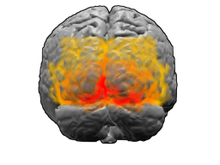An end-stopped line is a feature in poetry in which the syntactic unit (phrase, clause, or sentence) corresponds in length to the line. Its opposite is enjambment, where the sentence runs on into the next line. According to A. C. Bradley, "a line may be called 'end-stopped' when the sense, as well as the metre, would naturally make one pause at its close; 'run-on' when the mere sense would lead one to pass to the next line without any pause."
An example of end-stopping can be found in the following extract from The Burning Babe by Robert Southwell; the end of each line corresponds to the end of a clause.
The following extract from The Winter's Tale by Shakespeare is heavily enjambed.
In this extract from The Gap by Sheldon Vanauken, the first and third lines are enjambed, while the second and fourth are end-stopped:
Scholars such as A. C. Bradley and Goswin König have estimated approximate dates of undated works of Shakespeare by studying the proportion of end-stopping to enjambment, the former being more typical of Shakespeare's early plays, and the latter a feature of his later works.
See also

- enjambment